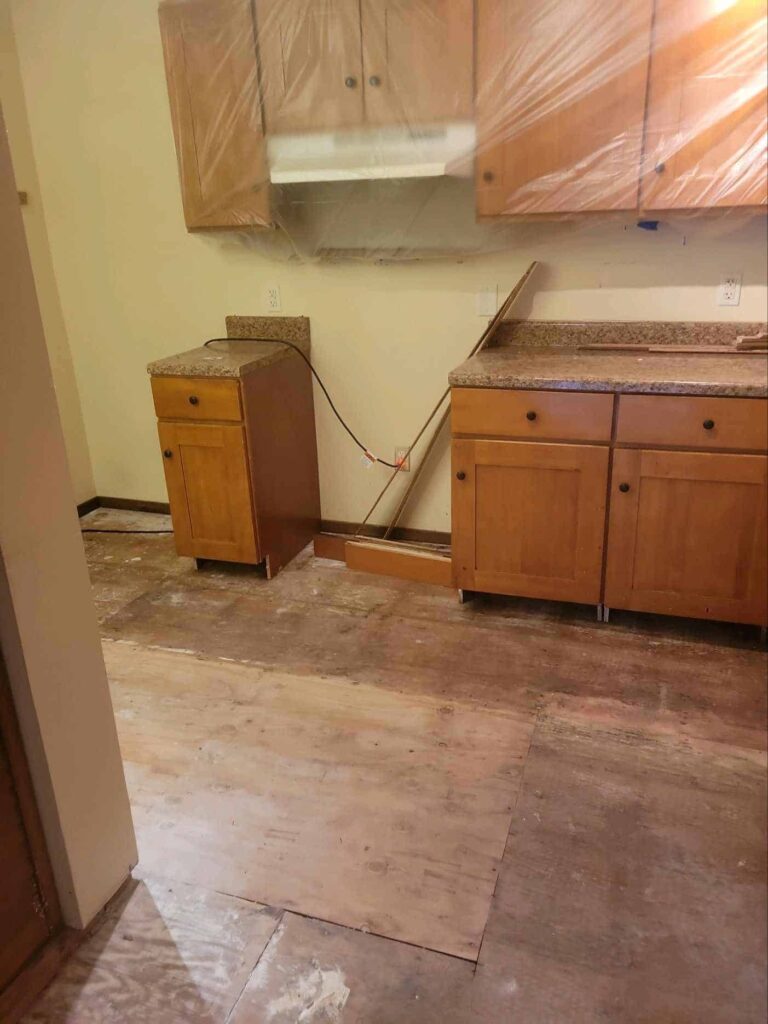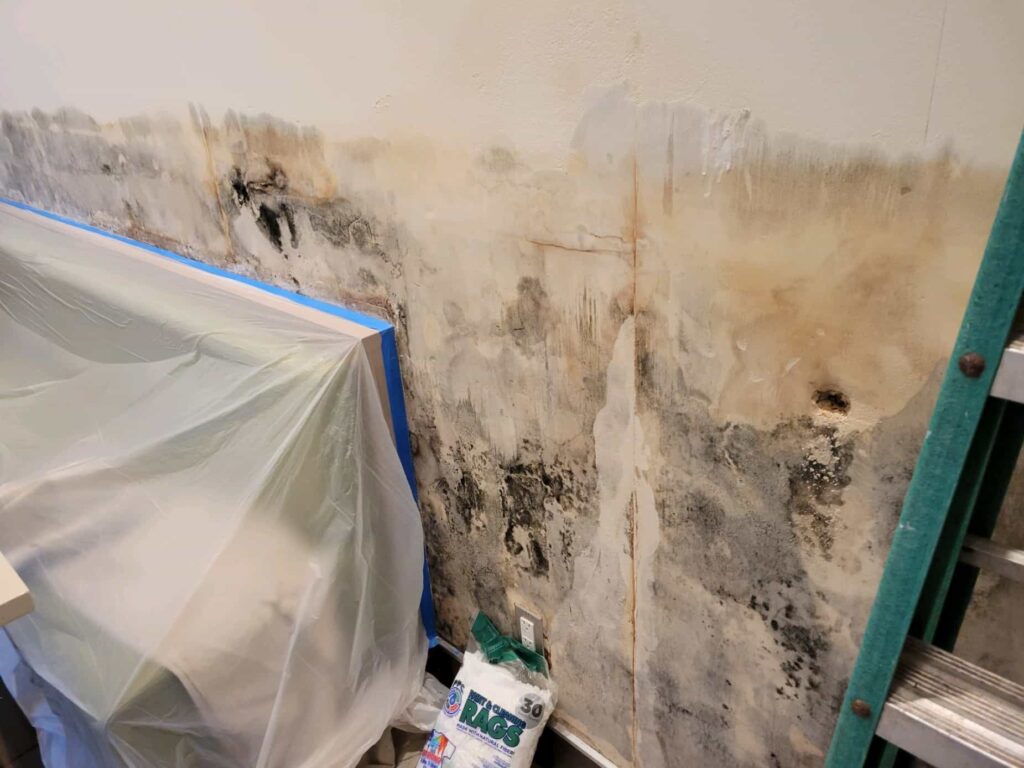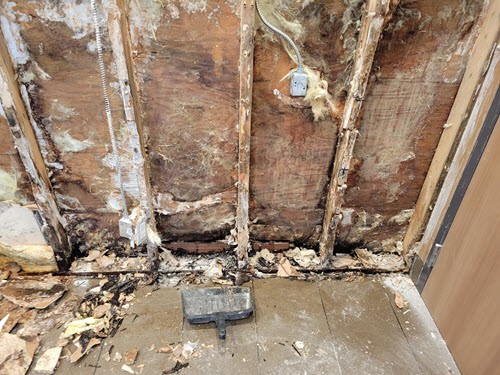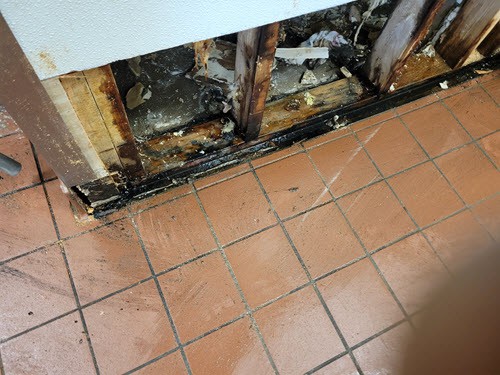Water spills or leaks can cause major problems in a very short time. And it doesn’t take much. Water tends to keep flowing and moving until it hits a spot that stops it. Or it dries up. Water damage cleanup needs to be done as soon as possible, for a variety of reasons:
Mold begins to form within 48 hours, possibly more quickly in hot weather. Mold formation is a major health threat as well as causing deterioration of things like wood and textiles (including carpeting). When something remains wet for an extended time, the conditions are ripe for mold to develop. That’s why one of the first things we do in case of a water leak is to bring in industrial dehumidifiers to begin drying out wetness beneath a surface.
Water can be absorbed and wicked into surrounding areas and cause damage in spots away from the source of the leak. We recently were called by a homeowner who had a water leak in her kitchen. A stack of dishes drying had slipped and hit the faucet, turning it on. The dishes falling into the sink blocked the drain, and the result was a waterfall over the edge of the sink to the kitchen floor. Fortunately it was discovered within about 20 minutes, but by that time a substantial amount of water had flooded the kitchen floor. The owner immediately got out a wet/dry vac and sucked up the standing water and used towels to dry the floor. Fortunately that cut down on the amount of water, but there was still substantial wetness.

For example, the flooring was laminate, and the gaps in between each piece allowed water to penetrate to the subfloor, soaking the plywood sheathing. The cabinets were an inexpensive pressboard type, and they worked like a sponge and absorbed water. We tested for moisture within 24 hours of this happening, and again in 48 hours. What we found after 2 days was that moisture was present about 8″ up the walls (that didn’t show up in the first test). And while initially it appeared the transition strip between the kitchen floor and the dining room carpeting had kept the water from flowing into that room, after 48 hours there was moisture beneath the carpet almost 2 feet out from the transition strip.
Our technicians also went into the crawl space beneath the kitchen, and they found standing water on the cement foundation as well as wet insulation beneath the floor. Another dehumidifier was put in place there, which dried up the standing water as well as the insulation. But the insulation will need to be replaced, because once it gets wet, it will never function as well as it did before.
Ultimately, what appeared to be a minor water mishap resulted in major repairs being needed. First our crew moved all the appliances out, then tore out the kitchen flooring and base cabinets to allow the dehumidifier to do its work for a few days. (The base trim also had to be removed so the bottom portion of the walls could dry out.) Once moisture testing indicated everything was dry, damage repair work could begin. (Fortunately the dehumidifier was able to dry out the damp carpet areas so the carpet and pad didn’t need to be pulled up and replaced.)
While we recommended that the drywall that had gotten wet get replaced, the homeowner opted to skip that step since testing showed it had dried out. And since it was not an outside or load bearing wall, we felt this was not a major issue. We did however let the owner know that once drywall gets wet it softens and weakens. Those areas may need to be replaced in the future, but since they were now dry, we were not concerned about mold development.
Replacing the flooring, the base trim, and the cabinets made up the majority of the reconstruction. Touch-up paint of course was needed. The owners suffered a bit of inconvenience, and elected to stay elsewhere during the remediation. (Of course, they had no access to the kitchen, and those dehumidifiers throw off quite a bit of heat and make a lot of noise.) Fortunately their homeowners’ insurance covered the cost of a hotel stay while we worked.
If you have a water leak – regardless of how small – it’s a good idea to have it checked by a water damage remediation company like hours. You may have more damage than you think!
MedTech Cleaners, Inc. is a biohazard cleanup and remediation area serving communities in the Pacific Northwest. We’re based in Spokane, but we work in other areas such as Seattle and communities in Idaho and Montana. Check out our service area, and if you’re not sure whether we work in yours, give us a call to find out.







